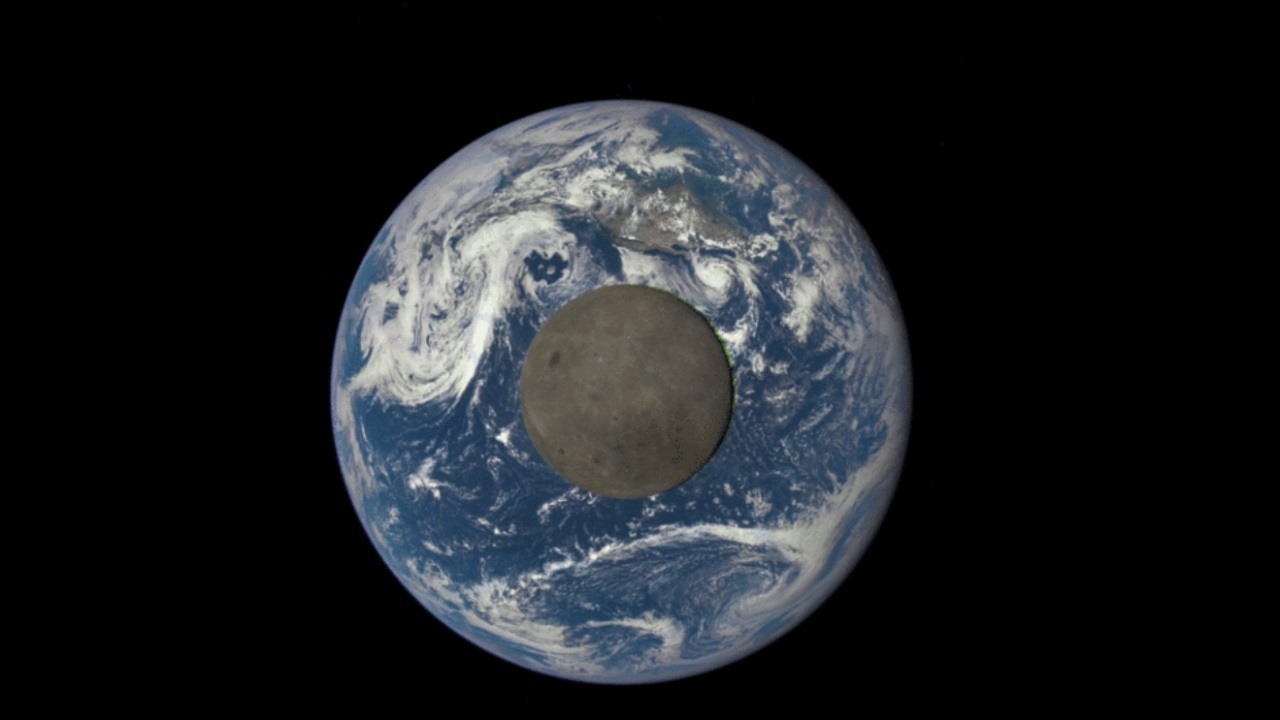It is now emerging that those who reject the idea that factors external to the Earth can have a significant influence upon the Earth's climate are increasingly at odds with the evidence.
One quirky way to show that this is the case is to reverse the argument around. This can be done by asking the question: Is there any evidence to show that the Earth can have a significant influence upon the Moon and nearby planets? If this is indeed the case then would it be so hard to imagine that it might possible for the reverse to happen (in specific cases). One piece of evidence that shows that the Earth can have a significant impact upon external astronomical bodies is the gravitational interaction between the Earth and Venus.
Every time the planet Venus passes between the Earth and Sun it presents the same face towards Earth. This happens because the slow retrograde rotation rate of the planet Venus (approximately 243 days) has allowed the Earth's gravity to nudge Venus's rotation period into a resonance lock with the Earth's orbital period.
We now have an addition piece of evidence to support the idea that the Earth can have a significant influence upon the Moon. Thomas et al. 2015 (1) report that imaging by the Lunar Reconnaissance Orbiter Camera (LROC) has revealed the presence of over 3,000 geological faults known as lobate scarps. Indeed, it has emerged that these globally distributed faults are the most common tectonic land form on the moon.
Initially it was thought that the lobate scarp faults were created by the gradual shrinkage of the Moon's crust as it cooled. However, an analysis of the orientations of these small scarps has yielded a very surprising result. It shows that the orientation of the fault lines is being influenced by an unexpected source--gravitational tidal forces from Earth.
Smithsonian senior scientist Thomas Watters of the National Air and Space Museum in Washington said that: "There is a pattern in the orientations of the thousands of faults and it suggests something else is influencing their formation, something that's also acting on a global scale -- 'massaging' and realigning them."
The other forces acting on the moon come not from its interior, but from Earth. These are tidal forces. When the tidal forces are superimposed on the global contraction, the combined stresses should cause predictable orientations of the fault scarps from region to region. "The agreement between the mapped fault orientations and the fault orientations predicted by the modeled tidal and contractional forces is pretty striking," says Watters.
The fault scarps are very young -- so young that they are likely still actively forming today. The team's modeling shows that the peak stresses are reached when the moon is farthest from Earth in its orbit (at apogee). If the faults are still active, the occurrence of shallow moonquakes related to slip events on the faults may be most frequent when the moon is at apogee. This hypothesis can be tested with a long-lived lunar seismic network.
The question now becomes, why is it so hard for scientists to admit that factors external to the Earth could have a significant impact upon the Earth's climate?
Source: NASA/Goddard Space Flight Center - "Earth's pull is 'massaging' our moon." Science Daily, 15 September 2015.
Reference
- Thomas R. Watters, Mark S. Robinson, Geoffrey C. Collins, Maria E. Banks, Katie Daud, Nathan R. Williams, Michelle M. Selvans. Global thrust faulting on the Moon and the influence of tidal stresses.Geology, 2015; 43 (10): 851 DOI: 10.1130/G37120.1




How can you have moon's gravity pull on our oceans yet moon stays far enough not to be 'sucked in' by earth?